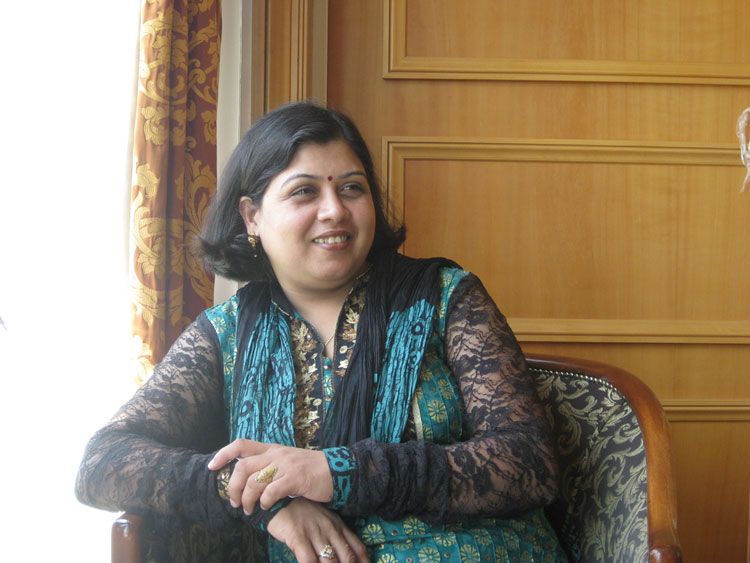 India’s ruling Congress Party was stunned by the magnitude of recent public protests. For the first time in recent history, India’s normally docile middle class and its youth are speaking up over everything from the country’s recent rape tragedy to the Congress Party’s corruption. Social media and technology have empowered these segments of society in new ways. The digital world has enabled similar rebellions in China and the Middle East.
India’s ruling Congress Party was stunned by the magnitude of recent public protests. For the first time in recent history, India’s normally docile middle class and its youth are speaking up over everything from the country’s recent rape tragedy to the Congress Party’s corruption. Social media and technology have empowered these segments of society in new ways. The digital world has enabled similar rebellions in China and the Middle East.
This is just the beginning, though. As the cost of devices drops and Internet access becomes universal, we are witnessing a new kind of revolution.
Information used to be more localized. People were barely aware of the affairs of their own villages let alone in nearby towns or the rest of the country. Governments had the power to feed their citizens whatever propaganda they wanted them to know.
Now, however, people are more connected. Those in the poorest parts of the world are gaining access to an equivalent breadth of knowledge as those in the wealthiest parts. They are beginning to participate in the global economy, to learn from others, and to solve their own problems.
The first global communications revolution began with cell phones. Over a 10-year period the number of cellular subscriptions jumped from a few million to nearly 6 billion (or 87 percent of the world’s population, according toThe International Telecommunication Union). These made it possible for families to stay in touch when breadwinners travelled to cities and for workers to connect with employers. They allowed populations to discuss what was happening in different parts of the country and to exchange political views. And they allowed the disenchanted to organize demonstrations via text messages.
The next step in this revolution is cheap tablets. India recently launched theAakash tablet, which provides all the features of more expensive tablets. It has a processer as powerful as the first iPad, twice as much RAM, and an LCD touch screen. One hundred thousand of these devices have been purchased by the Indian government from a company calledDatawindfor $40 and are being provided to teachers and school children for a subsidized price of $20. Meanwhile, Datawind has sold 1 million of these commercially at a price of $60.CyberMedia Researchsays that within two quarters of its introduction, the Aakash tablet has leaped ahead of Apple in terms of market share in India.
To add to the increasing accessibility of technology and its benefit, India haslaunched an initiativeto connect 250,000 villages via optical fiber cable. The fiber-optic lines will provide cheap, affordable Internet. Regardless of whether the government delivers on these plans, India’s cell phone carriers already provide affordabledata plans. Newer versions of Datawind tablets, or “phablets” as they are colloquially referred to, have cell phone capabilities and come with unlimited web access for Rs.100 (US$1.75) per month.
India’s population currently has around 900 million mobile phones, which typically cost $30 or more. When the cost of the “phablets” reaches this price point, they will undoubtedly become the replacement device for cell phones. I expect that India, because of tablets, will have more than 100 million new Internet users in the next three years. This number will grow to more than 500 million within five years, and 1 billion by the end of the decade.
The Indian government has inadvertently started a revolution that will transform India and shake up the world. It has lowered the expected base price of tablet technologies to a range of $35 to $50. Chinese vendors are competing with Datawind to bring production costs below $35.
Cheap tablets will make it possible for farmers to watch weather reports, for village children to access MIT courseware, and for artisans to sell their goods online. These will also enable the development of Silicon Valley-style apps to transact commerce, play games, and manage bus and train schedules. Don’t be surprised to see villagers developing apps that solve their own unique problems.
Add some sensors that read a person’s vital signs to these devices and connect isolated villagers to physicians over Skype, and you can provide desperately needed medical advice. This isn’t wishful thinking. I askedAlivecor, which has developed an FDA-approved iPhone case that monitors heart rhythms, to test a credit card-sized version of their device with low-end Aakash tablets. Their founder Dr. Dave Albert told me it worked flawlessly. Albert’s goal is to sell a version of this device in India for a cost comparable to the price of the tablet. This will provide the same functions as expensive EKG monitors. There are hundreds of such sensor-based medical devices in development all over the world.
It is only a matter of time before $49 tablets are also commonly available in the West. This will wreak havoc on the global PC, laptop, and smart phone industries. It will decimate profit margins as the number of cheap tablets in use increases exponentially and prices continue to drop. There will be thousands of new uses for these inexpensive tablets. Expect to see them in your cars, houses, restaurants, schools, and even at church. There will be billions of interconnected devices.
There will be 3 billion more people coming online in this decade. Never before has humanity been connected this way. With ubiquitous access to Internet-capable devices, the poor and the rich will have the same access to information. The lower classes will be able to educate themselves, learn about the latest advances in agriculture and farming, find out the real value of the goods they produce, and take advantage of e-commerce. They will be able to tell the world about the bribes they paid and the abuses they suffered at the hands of corrupt government officials. They will be empowered just as the Indian middle class has been.
Most importantly, the rising billions will be able to participate in global discussions and exchanges of ideas. Imagine village-developed apps showing up in our app stores. Imagine young Einsteins emerging from the villages of Kenya, Columbia, and India — offering solutions to medical and scientific problems posed by Harvard researchers. These geniuses do exist.
This is all going to be a reality sooner than you think.












